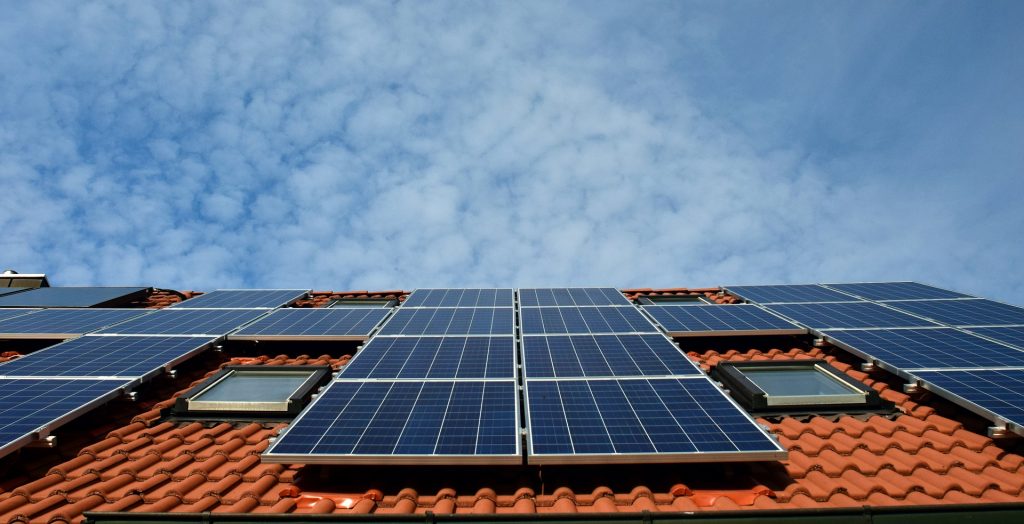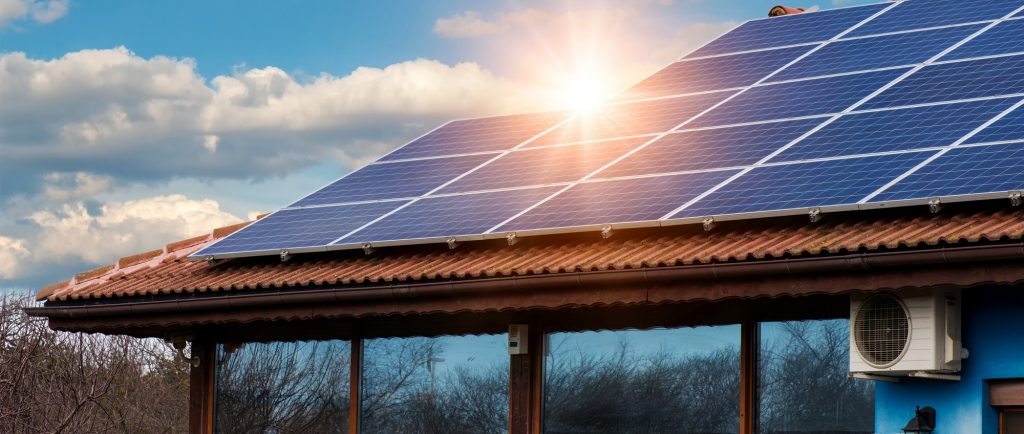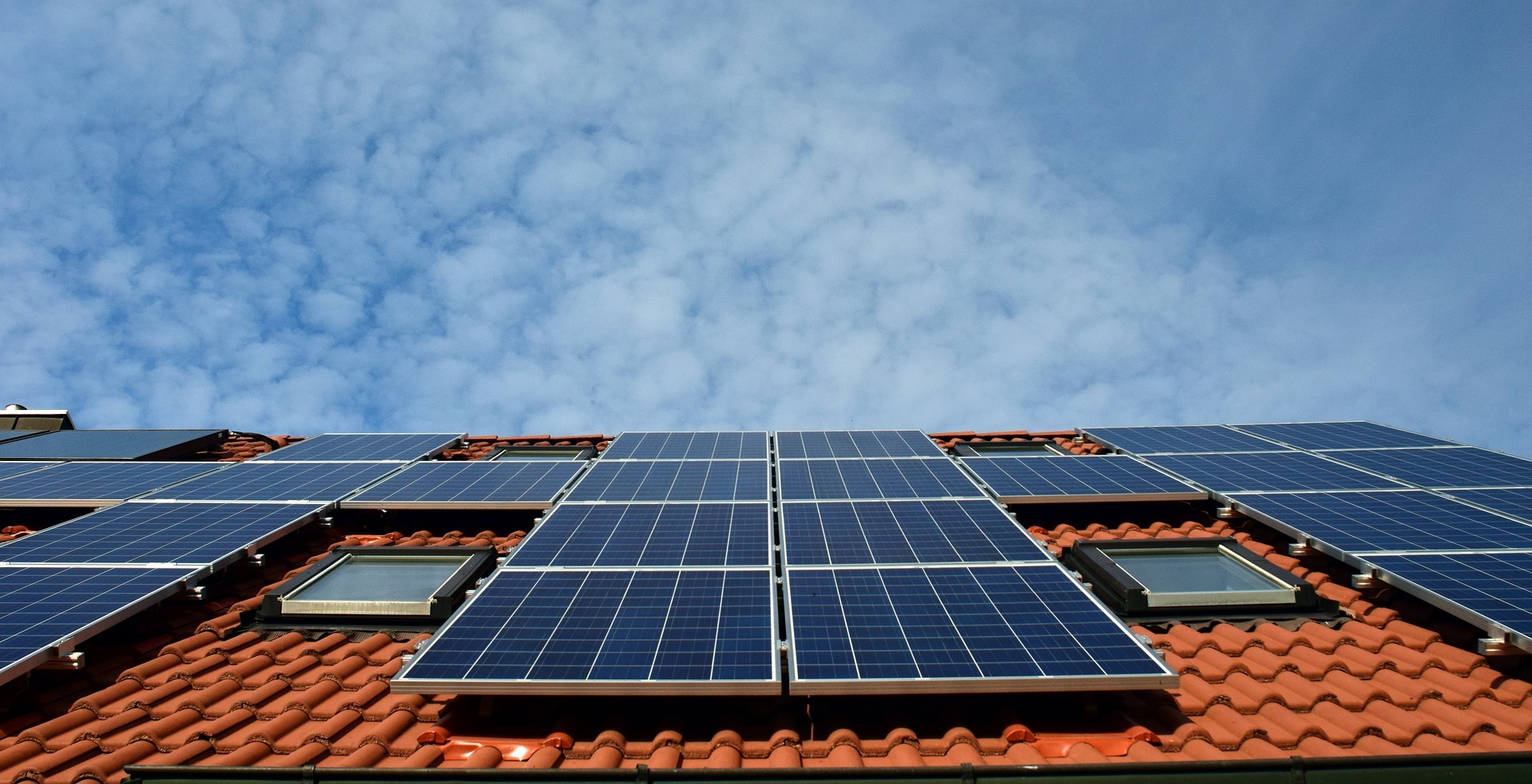
Renewable energy sources, such as solar power, have grown in popularity as the world attempts to wean itself off of its reliance on fossil fuels.
The question of whether solar energy is truly renewable or just another form of non-renewable energy is one that may be raised by some.
This blog will investigate the renewable status of solar energy by discussing the fundamentals of solar energy generation, the longevity of solar power, and the effects of solar energy on the environment.
Alternative renewable energy sources have attracted widespread interest as the world seeks to become more sustainable.
However one renewable source in the news since the early 2000s has been solar energy, but there is still some debate about whether or not this type of energy is truly renewable.
Is solar energy truly a renewable resource? We’ll address that and more in this piece. Here, we’ll go over everything from “renewable resources” to the inner workings of solar power technology as it relates to powering homes.
To determine whether or not installing solar panels is a long-term solution to global warming, you need to learn as much as possible about the matter.
Facts About Australian Energy
There is no sustainable method of replacing non-renewable resources. Non-renewable resources are depleted when used up; this is the case with fossil fuels like oil, natural gas, and coal.
The name “fossil fuels” comes from the fact that these fuels require thousands of years to generate naturally from the remains of long-extinct plants and animals.
Renewable energy sources, on the other hand, are those that can be utilised repeatedly without depletion or that can be quickly restored (e.g. timber can be harvested and then more trees replanted).
Renewable energy comes from non-depletable resources, including the wind, sun (solar), and waves.
Australia is fortunate to have access to a wide variety of energy options, both renewable and non-renewable, such as fossil fuels. Australia’s thriving economy is in large part due to the country’s abundant energy resources, which are used to power homes, vehicles, and businesses.
With a growing economy and population, Australia’s energy needs are rising.
Resources Of Non-renewable Energy
Nowadays, fossil fuels provide the vast majority of Australia’s energy demands. Three-quarters of Australia’s electricity comes from coal, natural gas is common in homes and increasingly utilised in industry, and the country’s transportation network relies significantly on oil, with some being imported.
Australia’s non-renewable energy resources consist of the following:
- Coal
- Thorium and uranium
Resources For Renewable Energy
Although their utilisation is rising, Australia’s renewable resources only supply a small fraction of its main energy needs and electricity output.
Australia’s hydropower resources are among the world’s most advanced and, thus, are currently the country’s primary renewable energy generator.
Hydroelectricity is generated by water use in high-rainfall, high-elevation regions (mostly in New South Wales and Tasmania).
There has been a dramatic increase in wind farms and solar power plants in recent years.
Research and development into improving the efficiency & cost-effectiveness of solar and wind electricity, such as creating solar thermal power facilities, has also received considerable funding.
Australia also benefits from geothermal energy as well as wave and tidal power. Australia harnesses geothermal energy from rocks that generate a lot of heat underground.
Most of Australia’s best tidal resources are found in the north of the country, particularly along the northwest coast of Western Australia. In contrast, the country’s best wave energy resource is located along the western and southern coastlines, especially in Tasmania.
A prominent alternative energy source is bioenergy. Electricity, heat, and even transportation fuels (biofuels) can be generated from organic materials (such as trash from a landfill or sugar cane), which can heat or power vehicles.
Is Solar Really As Renewable As We’ve Been Told?

Solar energy is considered a renewable energy source because it is produced using materials that are naturally replenished over time, such as sunlight.
Some, however, may have doubts about solar energy’s long-term viability and whether or not it is truly a renewable resource.
To provide a direct answer to this question, it is necessary to acknowledge that the world in which we currently find ourselves has changed significantly compared to our forebears.
A profoundly intertwined global and economic structure, accompanied by a gradual but steady increase in cultural and social variety, results from globalisation and international corporate concerns.
A worldwide awareness and shared position to safeguard the earth as well as the environment has also accompanied the interdependence of all nations on each other, mostly as a result of modern educational systems as well as the internet.
As a result of this viewpoint, legislators, corporations, and scientists have modified their previous ways of thinking, doing, and reacting to novel options.
The major oil companies spent over a billion dollars in 2016 alone to promote and influence the use of renewable energy.
While claims that oil companies are funding initiatives and research to increase public understanding of the need for clean energy may seem deceptive and counterproductive, it is important to remember that these oil behemoths made a net profit of $900 billion from clean energy in 2016.
Furthermore, in 2019, they put 3% of their $115 billion in capital investment into low-carbon alternatives. This could lead one to believe that a renewable energy power grid is either impractical or prohibitively expensive because of the market disruption it would cause.
Production, investigation, and promotion of renewable energy that relies on the wind and the sun have all increased dramatically in recent years, making this a highly significant shift. In a twist of fate, solar power eventually overtook the cost and practicality of running fossil fuel generators.
To put things in perspective, the price of one photovoltaic module used in solar panels was $76 in 1977 but has since dropped to just 50 cents.
These developments and economic benefits may not pique the interest of typical end users, but they will certainly attract the attention of major corporations like Big Oil.
Because large corporations’ business models are founded on the use of fossil fuels, it is safe to conclude that solar energy, as if its counterpart alternative energy, is economical, makes financial sense, and can be used internationally if it fits their interests.
Solar’s popularity has risen not just because of technological advancements but also because of consumer demands. Independent of the infrastructure and laws that shape its production, distribution, and consumption, solar energy is a highly renewable resource.
It is the complicated mechanics and interdependent components involved in the process of gathering sunlight & running a motor that classifies any energy as either renewable or non-renewable.
Yet, solar has significantly more upside potential than more conventional forms of energy use, such as fossil fuels.
To increase solar energy output and solar’s overall role as a renewable source, major economies are already contemplating multi-billion dollar expenditures in infrastructure.
To put this change in perspective, consider that Britain was the world leader in coal consumption at the start of industrialisation, the States invested extensively in the fossil fuel sector, and today China is the world leader in producing and supplying solar-based energy technology.
Solar energy options were pioneered in Germany, making the country a global leader in this field. With these tremendous changes occuring swiftly, we can still have faith in solar’s progress.
Nonetheless, the widespread belief that solar is a viable renewable energy source rests not only on hearsay and ignorance but also on decades of research.
Nonetheless, the widespread belief that solar is a viable renewable energy source rests not only on hearsay and ignorance but also on decades of research. Manufacturing solar panels raises concerns because, like any other factory, it uses a lot of resources and employs many workers to turn out a lot of photovoltaic cells.
This means that renewable energy does have certain environmental effects, but these are outweighed by the benefits of solar panels’ emission-free power. Research shows that a solar array can pay for its production costs in just a few years.
These discrepancies, however, should be controllable with increased awareness of employing best practices.
Until then, it’s important to keep a level head and keep looking for ways to expand the share of solar energy inside the worldwide energy mix and find ways to cut energy use on an individual and business level.
Are Non-Renewable Materials Used In Solar Panels Sustainable?
While there are numerous important sustainability factors to consider when asking if solar panels are sustainable, this is not yet a failsafe solution.
Whilst the sun is a renewable source of electricity, the materials used in solar panels are not.
Though, solar power’s long-term viability isn’t guaranteed due to a few factors. The presence of sunlight is a particularly crucial factor.
Although sunshine is naturally replenished, its availability can vary depending on factors like latitude, altitude, and time of day.
It’s common knowledge that solar panels produce less power on overcast days and during the shorter winter months.
This means that while solar power is renewable, it may require energy storage solutions to ensure a constant energy supply, especially during periods of low solar activity.
Therefore, can solar panels be used repeatedly? To be sure, they employ renewable technologies, but not all components are eco-friendly.
Work in mines can be dangerous, and extracting valuable minerals and metals often necessitates damaging the surrounding environment.

Water, energy, and chemical processes are all needed to convert these raw ingredients into solar cell components.
These days, solar panels are in their least sustainable phase of operation.
Yet, despite these shortcomings, a great deal of work is being carried out to enhance such procedures using new technologies that use ordinary materials and production techniques that use fewer harmful chemicals & result in much less waste.
Solar panels provide a quick energy return despite the high energy cost of manufacturing them. Most solar panels would generate more renewable energy than consumed during production within two years.
The payback will get shorter and shorter as production costs go down and panel efficiency increases.
The materials used to make solar panels are another consideration when thinking about solar energy’s long-term viability. In and of themselves, solar panels don’t contribute to global warming.
However, the manufacturing process can have an effect on the environment due to the silicon, copper, and aluminium required.
Greenhouse gases and other pollutants released during production of these materials have the potential to exacerbate climate change and other environmental issues.
It’s also possible to worry about how to dispose of solar panels properly. Solar panels have a long lifespan, but they will still need to be replaced at some point.
To prevent the materials used in solar panel production from becoming a long-term environmental problem, it is crucial that they be disposed of and recycled in an appropriate manner.
It would help to consider the quality control measures and production procedures that went into making these panels. There have been cases of improper waste disposal with negative consequences.
Sustainable materials and practices can be ensured by changes to both the law and the governing bodies that enforce it.
Despite these concerns, solar power is still a viable, long-term option. Technology advancements have reduced the cost and increased the efficiency of solar panels, making them a practical choice for households, businesses, and even governments.
Solar power’s intermittent nature can be mitigated with the help of new energy storage solutions and grid management systems.
Solar power is a renewable energy source that has many positive effects on both the natural world and human civilisation.
Even though there are concerns about solar power’s long-term viability, those concerns can be addressed with continued innovation and investment in renewable energy infrastructure.
Solar power will play an increasingly important role in meeting our energy needs in a sustainable and environmentally friendly manner as we continue to transition away from traditional fossil fuel-based energy sources.
As the global community seeks to lessen its reliance on fossil fuels, renewable energy sources like solar power have become increasingly attractive. However, the veracity of the claims that solar power is a renewable resource remain contentious.
This blog will look into solar energy’s renewable status by covering its basics, its lifespan, and its impacts on the environment.
Learning as much as possible about solar panel installation will help you decide if it is a long-term solution to global warming.
There is a wide range of energy sources available to Australia, both renewable and non-renewable like fossil fuels.
In recent years, the use of solar energy has skyrocketed in response to rising demand and technological developments in the solar industry.
It’s cheap, sensible monetarily, and potentially applicable globally if that serves their purposes. Some of the world’s largest economies are already planning to invest billions of dollars to expand their capacity to harness solar power.
However, decades of research have shown that solar panels can recoup their production costs in a matter of years, dispelling the widespread belief that solar is not a viable renewable energy source based on hearsay and ignorance.
Solar power has the potential to reduce glasshouse gas emissions significantly, but its long-term viability depends on a number of factors, including access to sunlight and energy storage technologies.
Though solar panels themselves are recyclable, not all of their parts are. Maintaining composure and actively seeking opportunities to reduce energy consumption and increase solar power’s share in the global energy mix are crucial. Solar panels have a high rate of return on investment, but their production can be harmful to the environment.
Quality control measures and production procedures should be considered to prevent the materials used in solar panel production from becoming a long-term environmental problem.
Solar panels have become a viable option for homes, businesses, and even governments as a result of technological advancements that have decreased their cost and increased their efficiency.
Long-term sustainability concerns for solar power, a renewable energy source with many benefits for the environment and human civilisation, can be addressed by continuing innovation and investment in renewable energy infrastructure.
